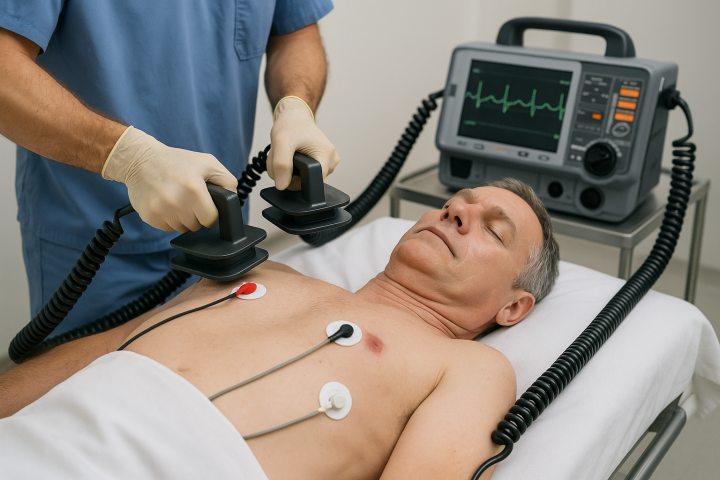When someone collapses and isn’t breathing, you might hear someone yell, “Get the defibrillator!”—and suddenly, there’s a sense of urgency, a race against time. But what exactly does that device do? Why is “shocking” the heart so often the first step in saving a life?
Let’s break down the fascinating science behind defibrillation and how it works to restore a heart’s natural rhythm.
What Is Defibrillation?
Defibrillation is a medical procedure that delivers a controlled electric shock to the heart. It’s used in life-threatening situations when the heart’s rhythm becomes erratic, disorganized, or stops altogether. The goal? To “reset” the heart and give it a chance to beat normally again.
Understanding the Heart’s Electrical System
Your heart isn’t just a muscle—it’s an electrical powerhouse. It beats in a precise rhythm thanks to electrical signals that travel through specialized pathways. This system ensures that each chamber of the heart contracts in a synchronized manner to pump blood efficiently.
Sometimes, though, this electrical system goes haywire. Two of the most dangerous rhythm disturbances are:
- Ventricular Fibrillation (VF): The lower chambers (ventricles) quiver instead of pumping blood.
- Pulseless Ventricular Tachycardia (VT): The ventricles beat too fast to fill with blood, leaving the body without circulation.
In both cases, the heart isn’t doing its job—and without immediate intervention, brain damage and death can occur within minutes.
How the Shock Works
Here’s the key idea: defibrillation doesn’t “jump-start” the heart like you might jump a car battery. Instead, it stops all the chaotic electrical activity in one powerful zap.
Think of it like rebooting a frozen computer. The defibrillator sends a high-energy current through the heart, halting all electrical impulses. This pause gives the heart’s natural pacemaker—a tiny cluster of cells called the sinoatrial (SA) node—a chance to regain control and restore a normal rhythm.
Types of Defibrillators
There are several types of defibrillators, each with a specific role:
- Automated External Defibrillators (AEDs): Found in public spaces and designed for use by laypeople with minimal training. These devices analyze heart rhythms and deliver a shock only if necessary.
- Manual Defibrillators: Used by medical professionals, offering full control over the shock’s intensity and timing.
- Implantable Cardioverter Defibrillators (ICDs): Surgically placed inside the body, these monitor the heart continuously and deliver shocks as needed to prevent sudden cardiac arrest.
Timing Is Everything
When it comes to defibrillation, every second counts. For every minute without defibrillation, a person’s chances of survival drop by about 7–10%. That’s why AEDs are now common in airports, gyms, schools, and other public spaces—they can truly make the difference between life and death.
Final Thoughts
Defibrillation is a remarkable fusion of biology and technology. By interrupting a chaotic electrical storm in the heart, a defibrillator provides a critical second chance—a literal shock back to life.
Whether you’re a healthcare professional or just someone who wants to be prepared, understanding how defibrillation works could help you save a life someday. Because when the heart falters, a well-placed shock might just be what brings it back in sync.


